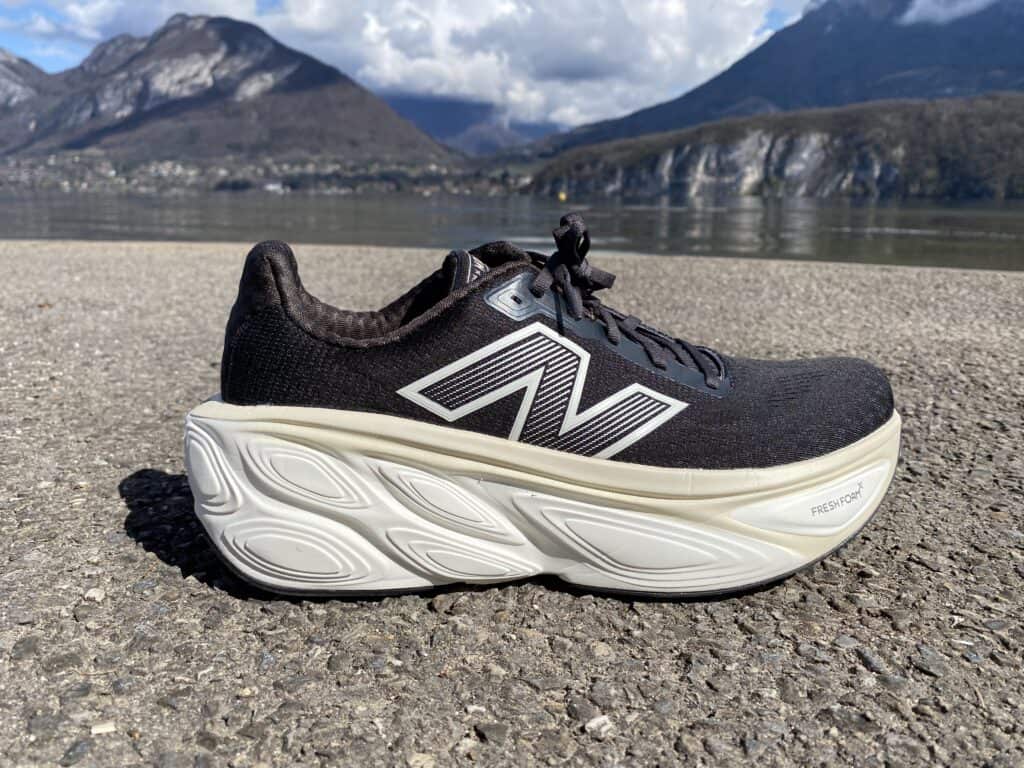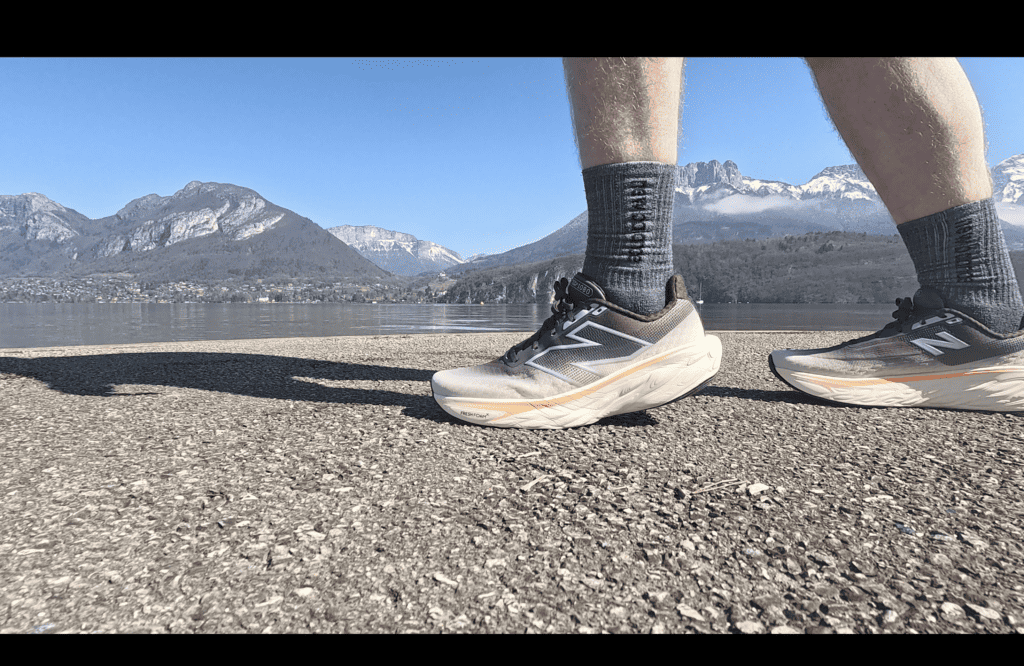Welcome to Flawless Shoe Reviews! Today, we’re comparing two of the most premium neutral shoes in the New Balance lineup: the New Balance More v5 and the New Balance 1080 v14.
While they both sit at the top of New Balance’s comfort range, they feel completely different underfoot — especially when walking or running. Let’s break down the key differences so you can figure out which one is the better fit for your feet and your lifestyle.
Cushioning and Midsole Feel
Both shoes feature Fresh Foam X cushioning, but they’re tuned very differently.
- More v5: This model has 43 mm in the heel and 39 mm in the forefoot, creating a 4 mm drop. It’s one of the softest, most cushioned shoes on the market — ideal if you want a marshmallow-soft feel for walking or standing all day. It transitions smoothly from heel to toe but prioritises comfort over responsiveness.
- 1080 v14: Slightly firmer than its predecessor, the 1080 v13, this model gives you 38 mm in the heel and 32 mm in the forefoot, offering a 6 mm drop. While still soft and premium underfoot, the firmer foam provides better stability and more energy return than the More v5, especially for light running or faster-paced walking.
Stability Features
While both are technically neutral shoes, they offer varying degrees of inherent stability.
- The More v5 has large sidewalls on the medial and lateral sides to help cradle the heel, but it comes with a soft heel counter. That means more side-to-side motion, which might not suit people with a history of ankle instability, peroneal issues, or posterior tibial tendonitis.
- The 1080 v14, by contrast, has firmer foam, supportive sidewalls, and a stiff heel counter, which all combine to offer more structure and control — making it more suitable for people who want neutral cushioning with added stability.
Check the latest prices on Amazon below:

Flexibility and Ride
- More v5: Very stiff forefoot due to the extra stack height. There’s no plate inside, but the sheer volume of cushioning limits flexibility — which can be good for protecting sensitive toes and forefoot conditions.
- 1080 v14: More flexible forefoot than the More v5, but still stiffer than many other running shoes. The ride is smoother and more responsive for everyday runs.
Fit and Upper
Both shoes are true to size and come in wide and extra-wide options, making them great for broader feet.
- Toe box: The 1080 v14 feels a touch roomier, though both offer ample space.
- Tongue & Heel: Both have well-padded tongues and heel collars that create a plush, secure lockdown.
Best For All-Day Comfort
If you’re on your feet all day and want maximum softness, the More v5 is hard to beat. However, if you want a more responsive feel and a bit more support without going full stability, the 1080 v14 is a more balanced option.
Running Use: Which One Wins?
Both shoes excel at:
- Easy runs
- Long runs
- Recovery days
However, neither is ideal for tempo or race-day efforts due to their weight:
- More v5: 303 g (Men’s US 9)
- 1080 v14: 297 g (Men’s US 9)
If you’re looking for a lighter neutral option, you might want to explore the Asics Novablast 5 or Hoka Mach 6, both of which are more performance-oriented.
Check the latest prices on Amazon below:

Final Thoughts
- Choose the More v5 if you want a super soft, cushioned ride and spend hours on your feet.
- Choose the 1080 v14 if you want a firmer, more stable ride that can handle walking and light running with a bit more responsiveness.


